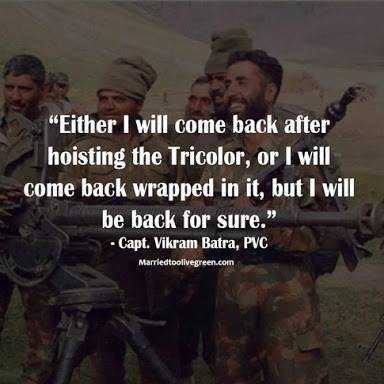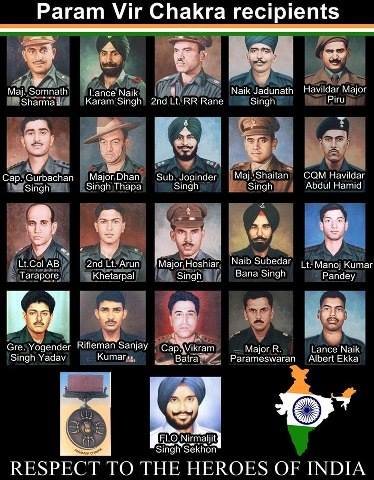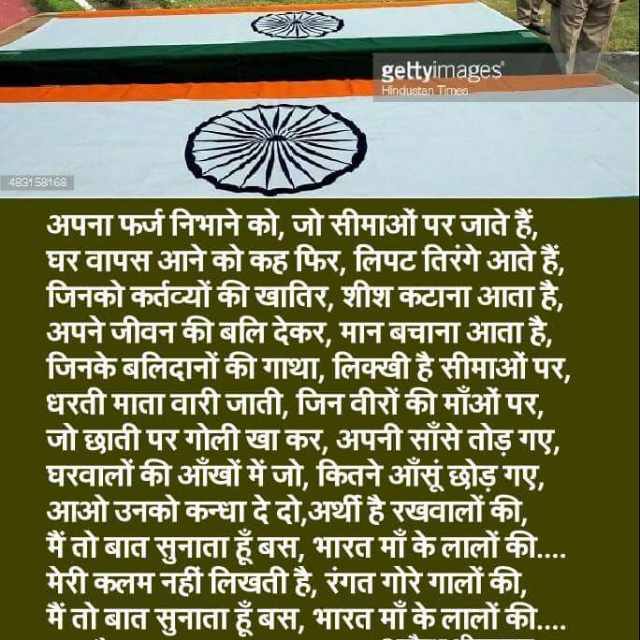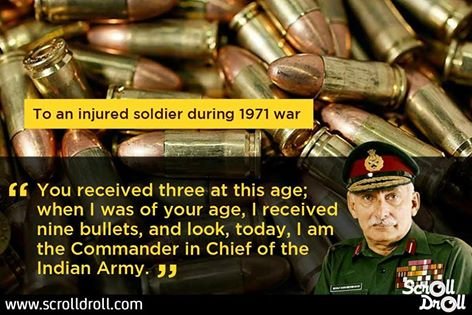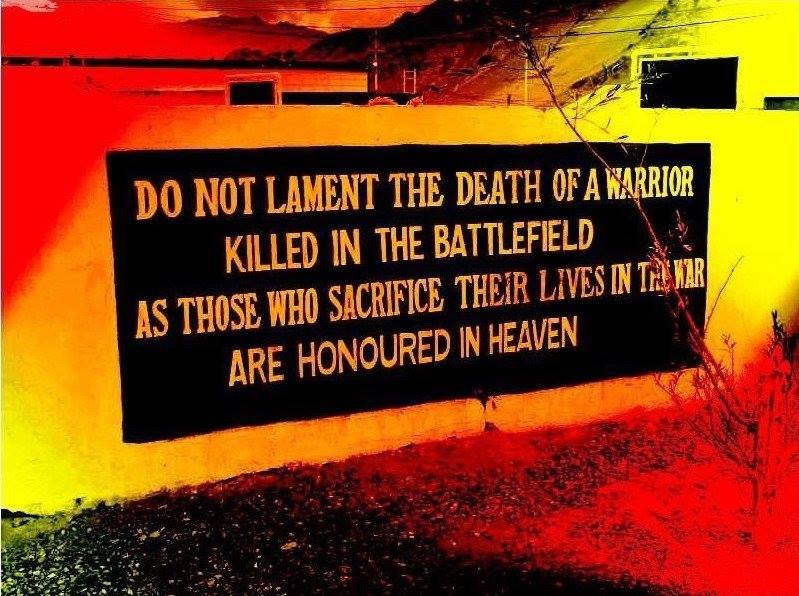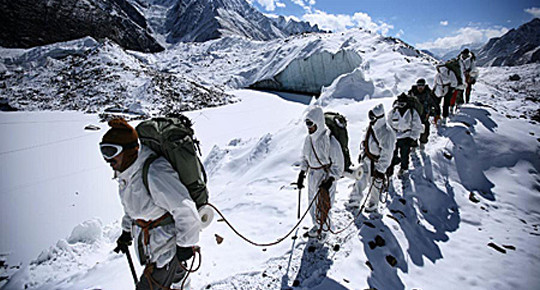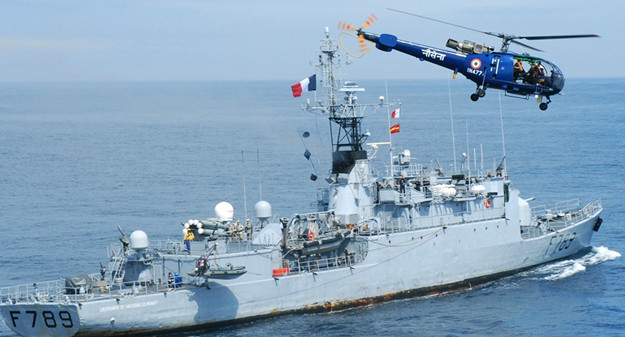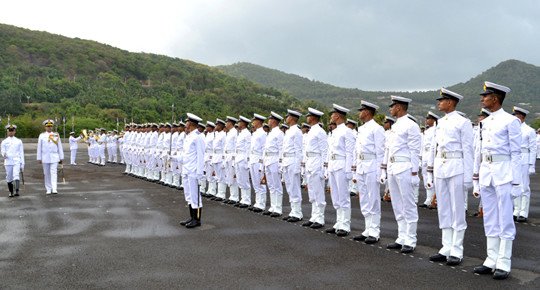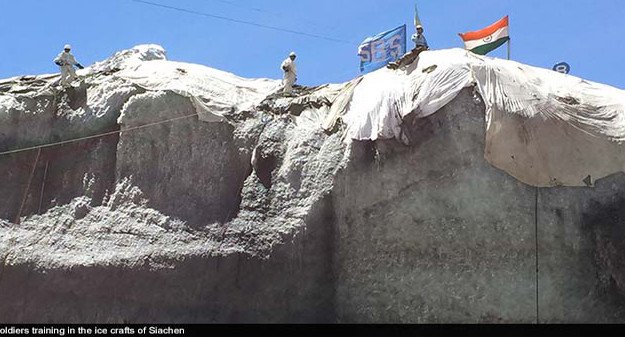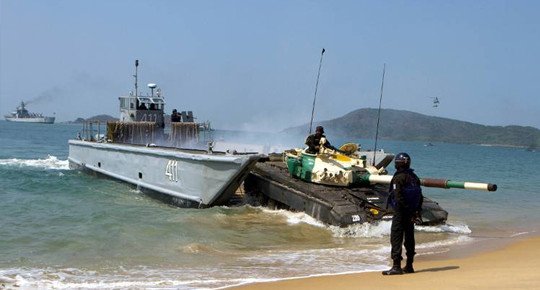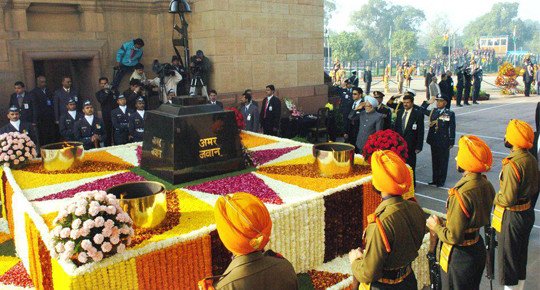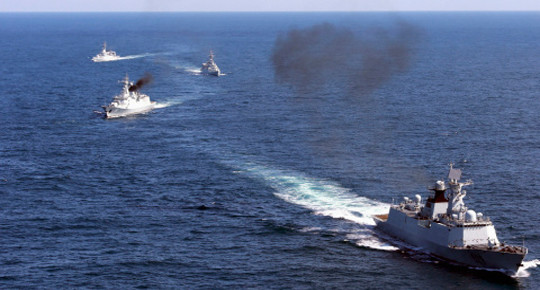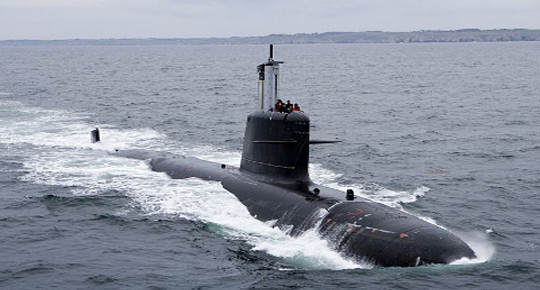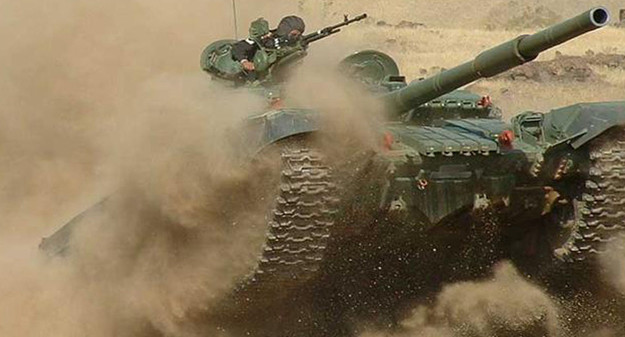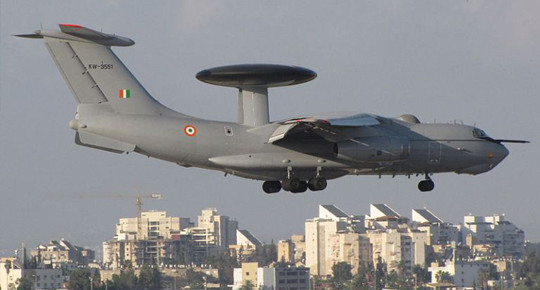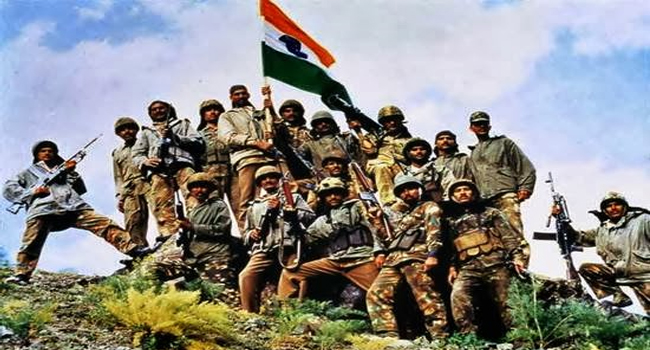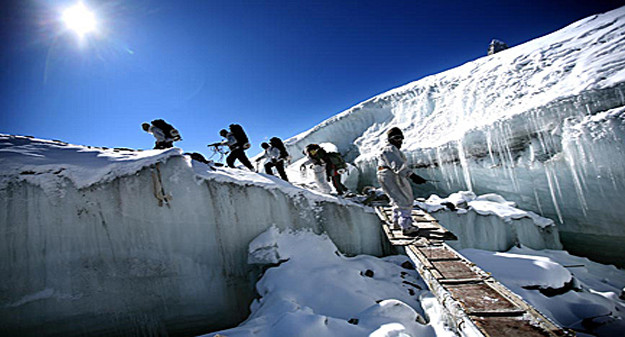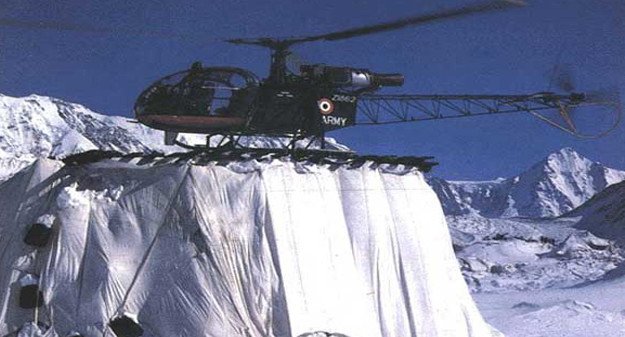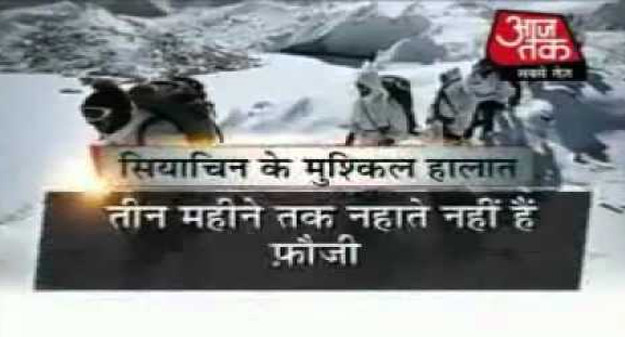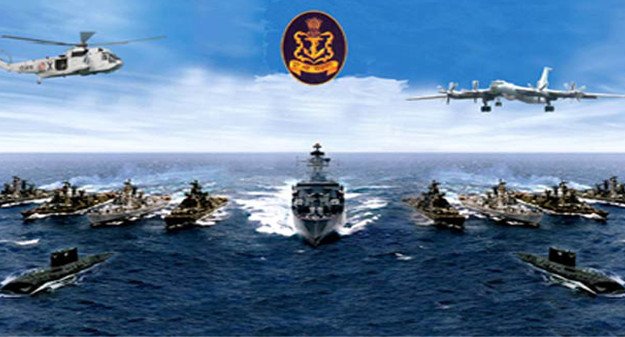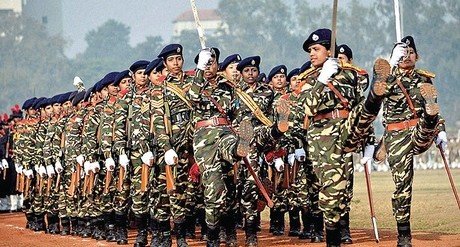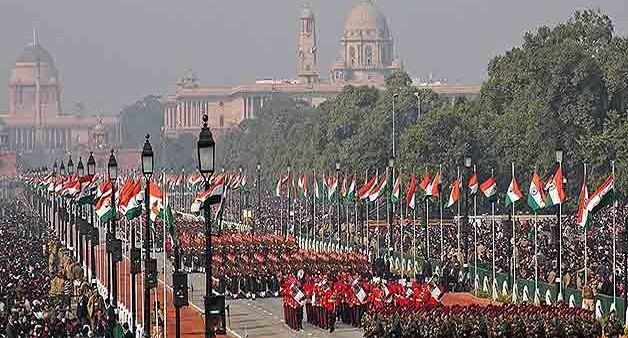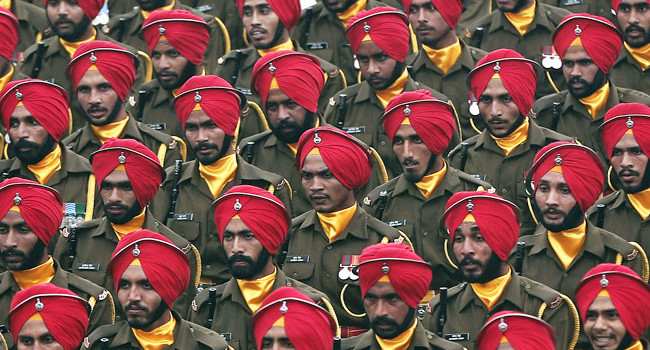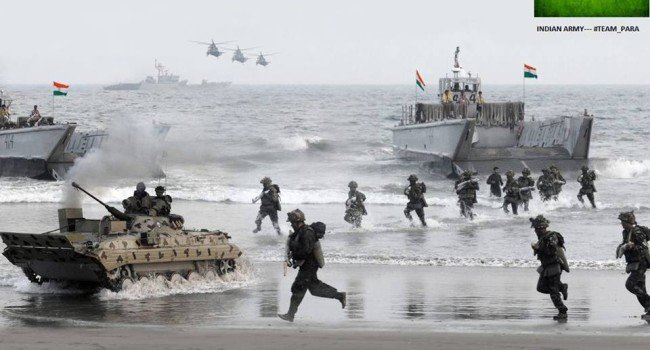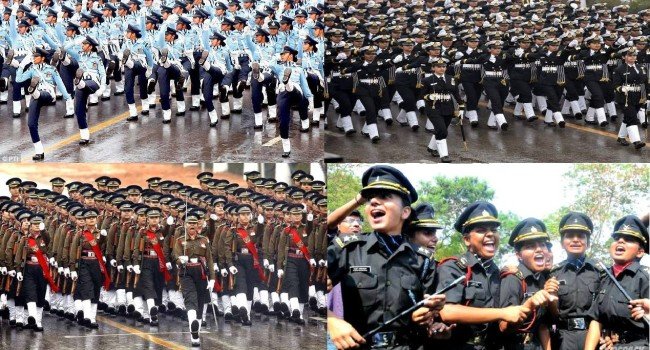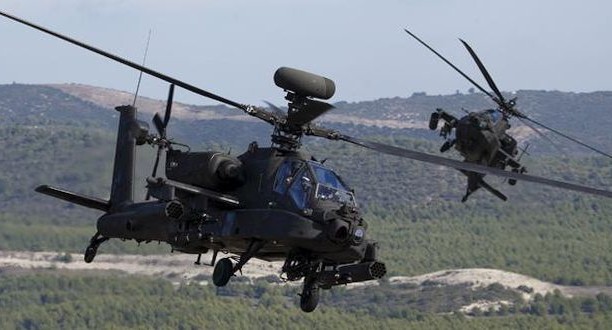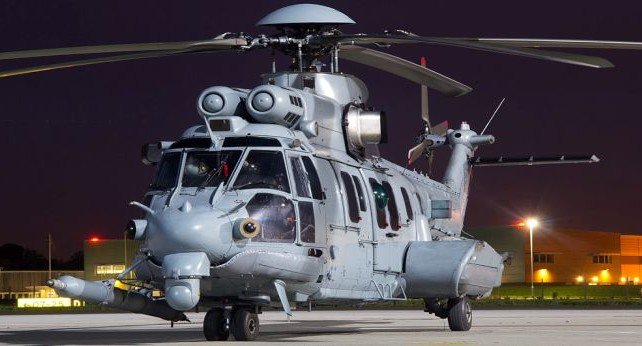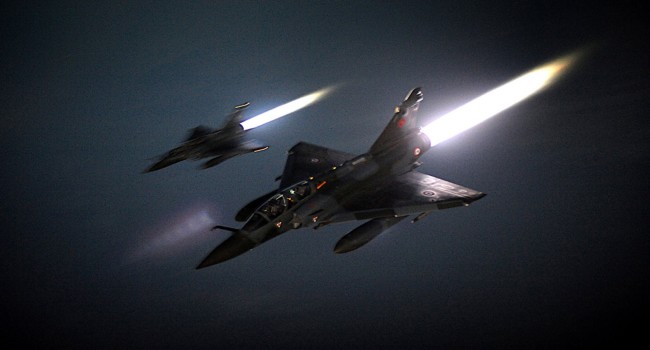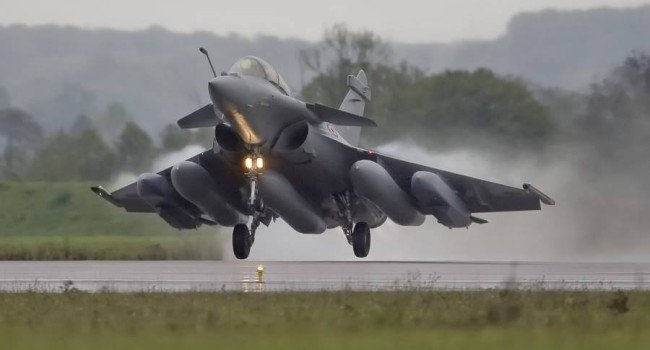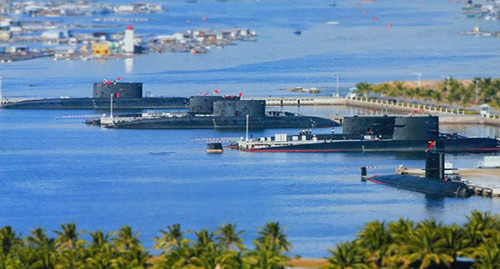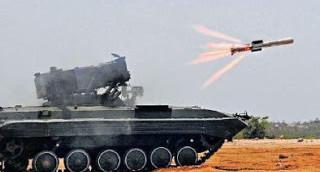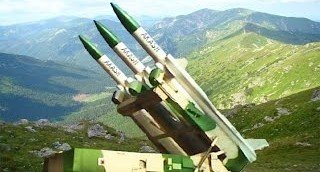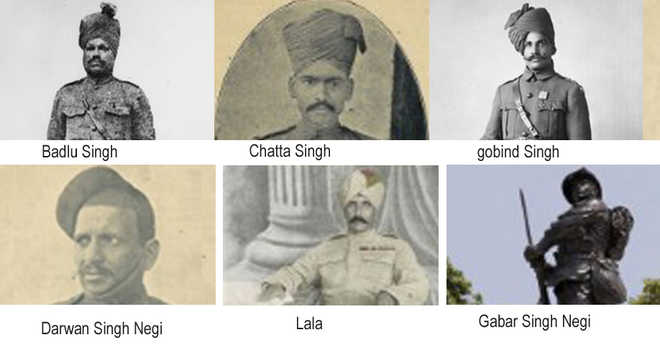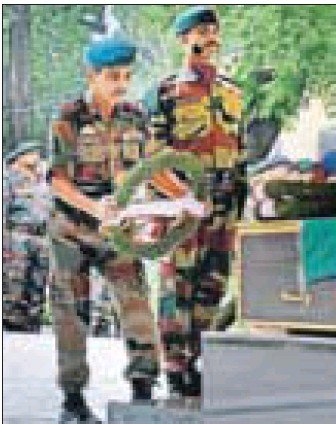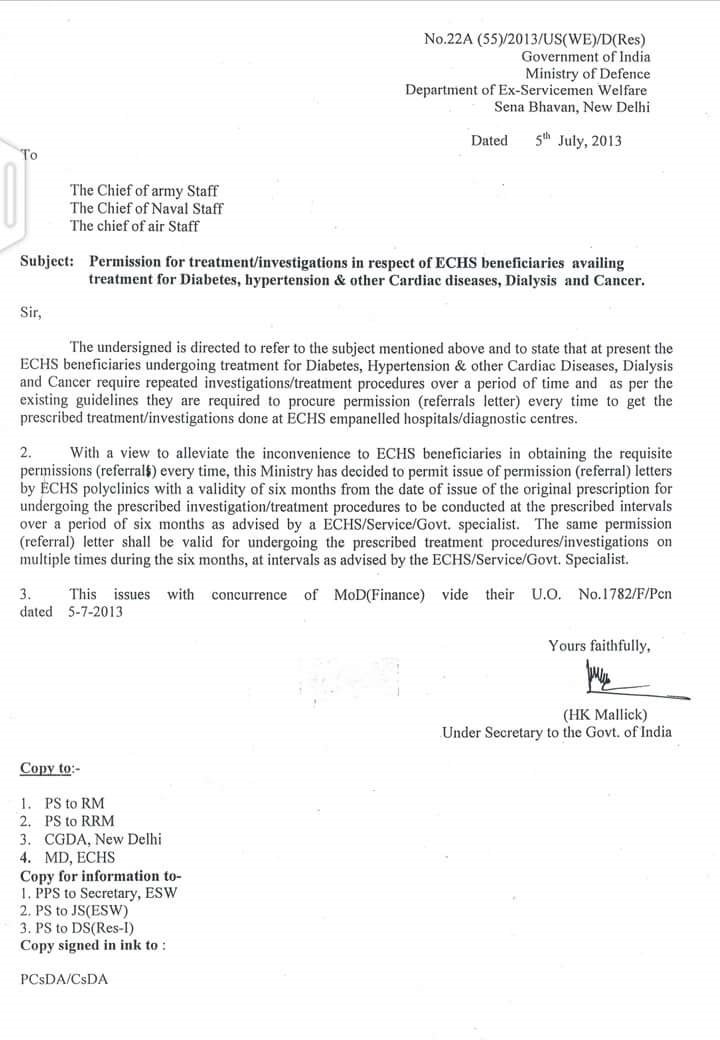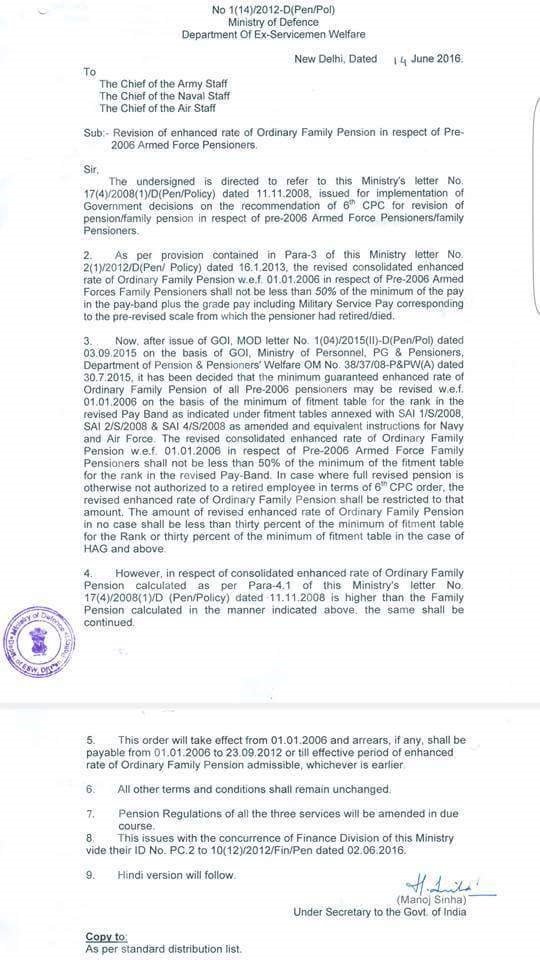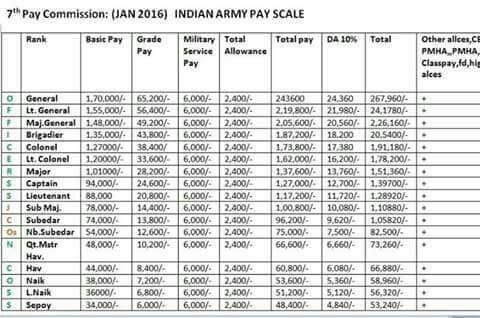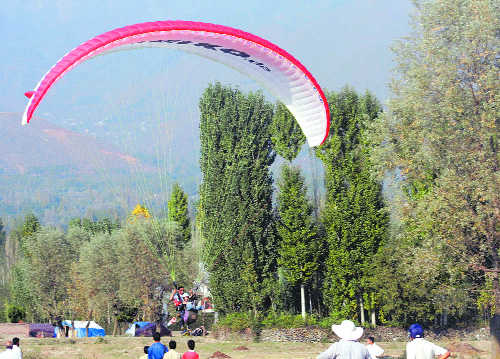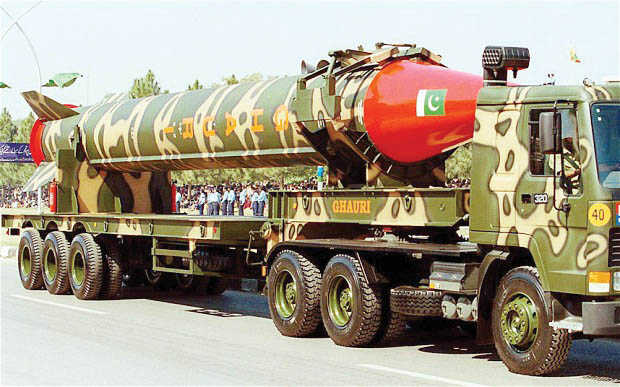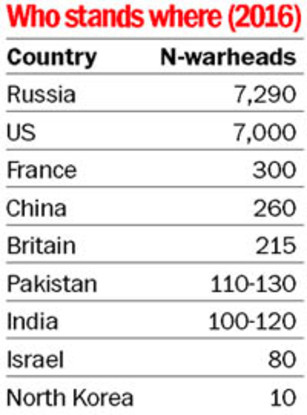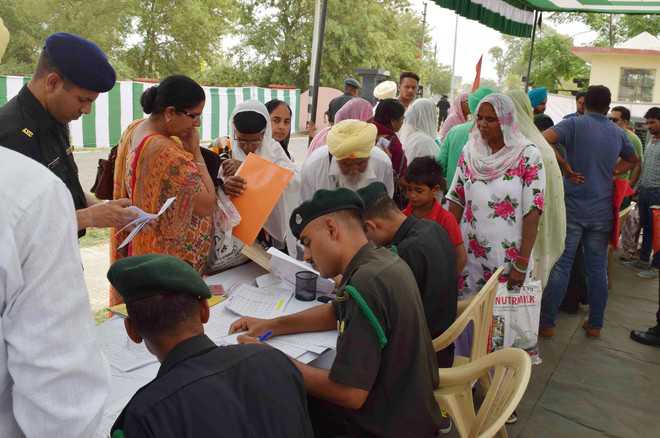It is invariably held that the Indian Army has failed in its job because we do not seem to be able to stop Pakistan-sponsored terrorists from infiltrating into J&K. This is a point which the Army’s PR machinery has never been able to explain with any degree of credibility.
It needs a detailed commentary to allow the right perception to sink in. For that, we need to go back to 1988-89 and progressively see how the J&K theatre’s threats panned out, with focus on the role of infiltration.
The Situation : 1987-89
It is not necessary to describe the triggers which set the Valley aflame. The apparent strategy Pakistan followed was to seize the moment when all parameters of India’s security were almost at rock bottom.
In 1988-89, four of our frontline army formations (about 20,000 men each) were deployed in Sri Lanka. Punjab had an ongoing major internal security problem and Operation Blue Star had made management of the situation even more tentative.
The Bofors case stole attention from what was building up in Kashmir and the political front was in turmoil after Rajiv Gandhi’s exit. All that Pakistan needed was the induction of enough young Kashmiris, trained in guerrilla warfare, led by a few foreign terrorists and SSG men from their own army. The diabolic “Zia Plan”, conceived in 1977, would then be underway.
The Indian Army’s Line of Control (LoC) posture had a “conventional military deployment”, just barely sufficient to ensure the “sanctity” of the LoC. These terms require a brief explanation. The Army’s role and task was to prevent any encroachment on the LoC. It did that then and does that even today, by holding static picquets and posts- the gaps between them are patrolled regularly. This ensures the “sanctity” of the LoC.
Surveillance existed for conventional war, where the adversary could make attempts to infiltrate in large columns to attack from the rear. In conventional operations, the adversary can, at the most, attempt one or two such operations all along the LoC- if it has to be successful at all. Small scale infiltration (strength of six to eight) could hardly be catered for.
The commencement of infiltration
What the Army’s conventional posture on the LoC came up against in 1988-90, and thereafter, was first the infiltration of some Pakistani servicemen in small numbers. They made use of multiple routes, much as they did in Operation Gibraltar in 1965. These formed the core teams for recruitment; who motivated and selected the volunteer youth for jihad and sent them across the LoC by exfiltration, along different routes, into PoK. The ease of infiltration and exfiltration of cadres and recruits was, thus, established.
In fact, these were commonly referred to as “highways”- denoting the relative absence of the Army’s capability to stop this movement. The Pakistani sponsors used the services of guides from the LoC belt who knew the terrain like the back of their hand, having spent all their lives there. They could always outwit our troops, who usually spent two-year tenures in their areas of deployment. The ground knowledge of the troops could never compare with the knowledge of the local guides.
To many, this may sound extremely critical of the Indian Army. It actually isn’t when you realize that an army is not trained, equipped or psychologically conditioned to prevent irregular movement across a linear alignment, on a 24×7 basis. That it has mastered it, since then, is a measure of its extreme flexibility.
Perceptions among our countrymen and, specifically, among the media have been largely based upon visits to the traditional tourist spots and the Valley floor of Kashmir. They have never been enabled a perception of the difficulties of the actual terrain, where the LoC exists.
Most media persons get a faraway glimpse of Uri’s popular Kaman Aman Setu, while driving along the “media route” or the famous Shararat post in Tangdhar, when they are taken on a structured tour by helicopter. None ever visit the famous landmarks along the Northern Gullies or Pir Panjal because they don’t know enough about them. They can go only where the Army wishes to take them.
Getting back to the progressive increase of infiltration and its reduction in subsequent years, it is important to know that, in 1989, a single formation (division) of the Army had the entire responsibility of the LoC in the Valley sector.
There were insufficient troops to increase the density of deployment on the LoC, to cater against small scale infiltration. During 1988-91, the trend of exfiltration of recruits and infiltration of trained cadres, leadership and military wherewithal continued. Switching from “sanctity of LoC” to effective “counter infiltration” was a near impossible military task.
In 1991, it may be recalled by some, how an Indian Army post was attacked by Pakistani regulars in the Keran sector. That commenced a series of such threats, forcing the Army to take measures to strengthen the defensive posture which opened gaps for infiltration, even as it retaliated in kind. After the arrival of the first Rashtriya Rifles (RR) units, there was some semblance of balance starting to return. Redeployment from Ladakh reinforced the LoC to a great strength and the reserve units could then start deployment in the second-tier.
Through the 90s and even afterwards, it is important to remember that the Valley had infiltration from every direction- even over the Pir Panjal. Since the training camps (ultimately, 42 of them) were spread all over PoK, even well south of the Pir Panjal in the Kotli, Nikial and Mangla areas on the PoK side, infiltration took place in the Jammu division too. Here, staging areas and bases were established.
Once inducted there, terrorists could infiltrate further over the Pir Panjal into the Valley. They made use of its high passes, where there was almost no Army or Police deployment. The arrival of the RR units made a major difference as it deployed into South Kashmir and took charge of the Pir Panjal. For many years, the firm base for infiltration into the Valley, employing the Pir Panjal routes, was at Hil Kaka. This was destroyed only in 2002.
Infiltration : The concept adopted by Pakistan
Principally, the concept from the Pakistani side was to employ trained local Kashmiri youth to foist a supposed home-grown militancy. They were first recruited, then exfiltrated, trained and then infiltrated back across the LoC.
This proved counterproductive as the chances of being interdicted, during the two moves over the LoC, started increasing. As the energy levels among local militants started to wane, more foreign terrorists were inducted for fixed tenures with handsome remuneration on return or guaranteed funds to their survivors, if killed.
The idea was that a certain threshold strength of terrorists would be built inside the Valley. They would undertake hit-and-run operations against the Security Forces (SF), keep the flag of resistance flying all over the Valley and intimidate the fence-sitters.
As much as the Army would achieve in terms of operations in the hinterland at the end of each year, the sum total was always against it. That is because even if an average of 1,100-1,200 terrorists were neutralized in a single year, Pakistan could quite successfully induct 1,500 or more through infiltration.
The lofty, jagged peaks rising to 14,000 feet, broken ground and jungle, which abounds the terrain along the LoC, was dominated by the Army night and day. Still, small numbers (six to eight) could slip past silently, even at 10-15 feet distance from ambushes as there was a limited number of night vision devices. The nooks and crannies in this terrain always work for the infiltrator. In the cusp between winter and summer, terrorists undertook the risk of infiltration when snow levels were still high.
Yes, in theory, any infiltration can be stopped a hundred percent but in theory only. That is, by having one Indian Army soldier at every metre along the 750 km LoC- something which can remain only in the figment of one’s imagination.
The task remained split between the protection of posts and picquets, sanctity of the LoC (no encroachments or intrusions) and counter-infiltration. The three-way tasking has always created a dilemma, which was further accentuated by exchanges of artillery fire. Terrorist attrition was reasonably high but for every terrorist killed on or near the LoC, it was estimated that at least three got through.
In spite of the successes that the Army has achieved- the counter-infiltration grid, till as late as 2000-2001 (post Kargil) – could not be optimised. Ambushes were randomly deployed, based on appreciation of ground and previous knowledge but there existed no uniformity of pattern or concept to defeat infiltration.
Infiltration is usually a well-planned process but, often, terrorists continue to repeat the very same routes where their colleagues have died earlier. This is because of their perception to compulsorily reach the “reception area” at the earliest. The “reception area” is a point where a group of terrorists, who are already inside the Valley, move with logistics to receive and guide infiltrators to the nearby villages. Subsequently, they are guided to the safe houses in the urban areas. Routes which involve longer marches are generally avoided and is due to the feasibility of interception, by surveillance of different kinds.
In 2003, under the stewardship of General Nirmal Vij, then Army Chief, the concept of counter infiltration finally changed with a landmark decision based on the experience of almost 15 years. For the first time, a clear-cut mission was given to commanders and troops in the Valley.
“To reduce the strength of terrorists in the Valley and Jammu to sub-1000”; there could not have been a more accurate mission. When such tasks are given, it is usually left to the senior field commanders to evolve the concept of operations- with resources being provided to match the concept as much as is feasible. General Vij, in conjunction with his senior commanders, conceptualised the LoC Fence as the “limit of infiltration”; demanding from field functionaries that it be continuous, overcoming terrain constraints.
The LoC fence did not become a Maginot Line, as many claim it to be. Rather, it is a system of marrying “physical obstacles, electronic surveillance devices, weapons and human resources in varying ratios”. Units and formations took ownership of their segments and focused, counter-infiltration efforts began in July 2004. The one item of equipment, which acted as a force multiplier, was the Hand Held Thermal Imager (HHTI) and its connected surveillance devices (LORROS)- procured on a fast track after Kargil 1999.
Surveillance and Sub-Surveillance Centers were set up to integrate all inputs. Improvisation also became the norm with “Gaddi dogs” (robust Gujjar-owned dogs) becoming the eyes and ears at many posts. Units took the trouble to set up training nodes for these dogs. As the LoC fence matured, the quantum of successful operations increased exponentially.
Some segments became virtually “no-go” areas for infiltration. Terrorists developed technique to defeat the fence but nothing worked. The only lacuna was that the wire obstacle would get compressed by the volumes of soft snow in winter, and the iron pickets would bend; needing high altitude segments to be reconstructed against time in April and May, each year. This took away much time and energy from general preparedness.
What has contributed to reduced infiltration? The effect of the LoC fence, the combination of enhanced and focused, counter-infiltration at the LoC fence, much-improved intelligence by all agencies, better coordination and sharing and, finally, far better dissemination. By 2007, more terrorists were being neutralised at the LoC and the hinterland by the security forces.
In 2008, a bold decision was taken to reinforce counter-infiltration deployment by induction of troops, from the Pir Panjal South to the Valley sector. The effect was enhanced control over infiltration, with some vast contact battles in the Kupwara sector. This had a dampening effect on the situation in the hinterland, which continued to improve. However, indirect effects were street protests and small-scale acts of terror in the hinterland. The focused elimination of terrorist leaders from 2007 onwards further diluted terrorist capability.
The growing success of counter-infiltration, which has reduced the numbers of terrorists from PoK, reaching the urban and semi-urban areas in the Valley, has had the following effects:
-Large-scale terrorist attacks have reduced drastically while resort to gun-snatching has increased.
-IED incidents have reduced and, in fact, have almost entirely vanished.
-New militancy characterised by the presence of local, Kashmiri youth has progressively increased in South Kashmir, with the hold of Pakistani terrorist leaders having been reduced.
-Street protests on slightest pretext are held as a way of keeping alive the issue of separatism.
-New methods of mass mobilisation of street power, to unnerve the SF during encounters, have also found favour.
For the layman, it is important to understand that at no point has infiltration ever been reduced to zero. The Army always maintains that a zero figure is impossible to achieve. I can back that claim completely with my experience of handling counter-infiltration, at various levels, from the lowest to the highest. Is the surge in terrorist activity in recent weeks due to enhanced infiltration? The Army would hotly contest that. Rightly so, because there have been a good number of successful operations in the vicinity of the LoC right through 2015-2016.
The indicators appear to show that infiltration is well under control. However, leakages do continue. North Kashmir, where the presence and hold of foreign (Pakistani) terrorists is higher, is relatively free of terror acts. Sopore, Bandipora, Pattan and Baramulla are unusually quiet. There has been activity around Uri, Tangdhar and Lolab Valley- all nearer to the LoC- indicating successful and some unsuccessful counter- infiltration operations.
If terrorists successfully reach their destinations, there would be a spurt in violence just around early July- when the tourists start returning home, and the Sri Amarnath Yatra gathers more steam. The events in South Kashmir’s Anantnag do not, thus, seem related to any surge in infiltration so far. Yesteryears’ concentration of terrorists at Anantnag would also be from the Jammu division, infiltrating over the Pir Panjal. That may be possible, even currently, while the by-election process is underway until 19 June.
However, the strength in the Jammu division itself is extremely weak and does not support that analogy. The Army has to remain alert at the LoC as there are areas which have not been exploited for some years. The routes over the Shamshabari in Uri sector, Naugam, Tangdhar, Pharkian and Zamindar Gali have been frequented far too often. Usually, the terrorists using these routes end up at the forest tracts- Rafiabad, Rajwar and Hafruda- which are under security forces domination. Gurez and Gulmarg need some additional focus. Helicopter-borne response teams are necessary for these areas, along with UAV surveillance and observation.
The link with the situation of infiltration efforts into Pakistan is indirectly proportional to the internal situation in Pakistan. Now that the internal security environment is under better control and the closing months of General Raheel Sharif’s tenure are underway, perhaps a surge is what the ISI could be planning for. The Lashkar-e-Taiba (LeT) and Jaish-e-Mohammad (JeM) are rabid outfits. In their strategy, major attrition of jihadis is acceptable as long as a few prominent leaders can be inducted along with some logistics, military wherewithal and lower-end cadres. For an attempt by 100 terrorists, they are willing to lose up to 60, if not more.
That means that the Army’s success in neutralising terrorists on the counter-infiltration grid may not necessarily mean reduced strength of terrorists in the hinterland, especially if the “deep state” in Pakistan decides that a surge is what it wants. The only deduction from this is that the counter-infiltration machinery has to be fully geared up and reinforced with intelligence, being generated and disseminated in near real-time. None of that “put up on file” business which some warriors, who are not used to the grid, may want to follow.
The lesson of this essay is that the focus of operations may be on “New Militancy in South Kashmir” and the mobs obstructing operations. That is all fine, operational and tactical. The real and strategic-level decision-making aims at bolstering the counter- infiltration grid so that the progress of the last 13 years will not languish. The Army is up against a reinvigorated ISI, which will look for innovative ways and areas in the attempt to execute its aim of increasing the footprint of the sponsored terrorists in the Valley.
There is no rest for the Army. Its 24×7 posture has to remain activated, everywhere. Mostly so, on the LoC and the reception areas of North Kashmir, Rafiabad, Hafruda, Rajwar, Lolab Valley and Tehgam. All of them are household names in the lexicon of the Army, which must remain free of terrorists. The flanks will also feel the pressure and focus, and attention needs to shift to the old, traditional routes. The Indian Army has to succeed and, given its professionalism, it will succeed.










